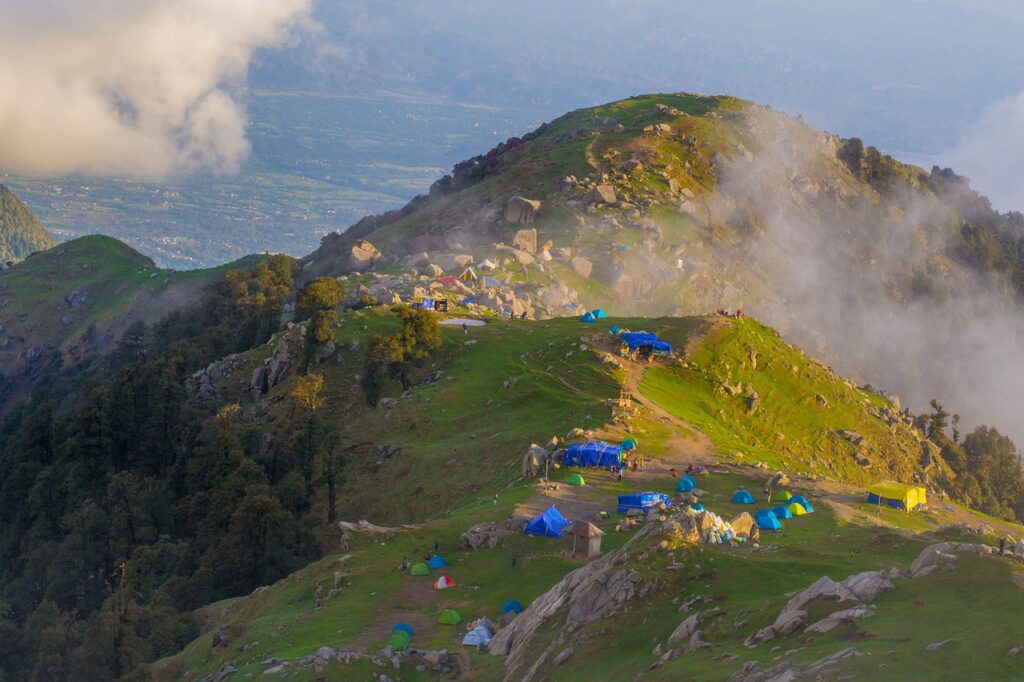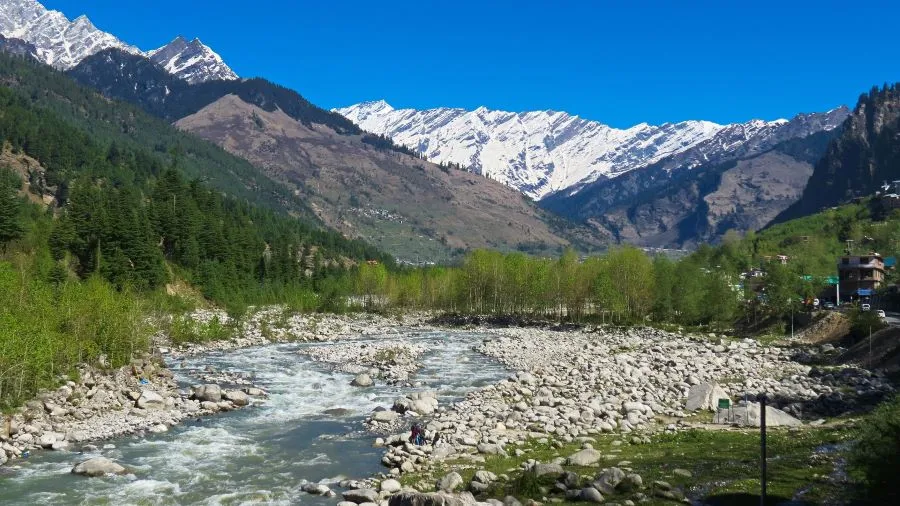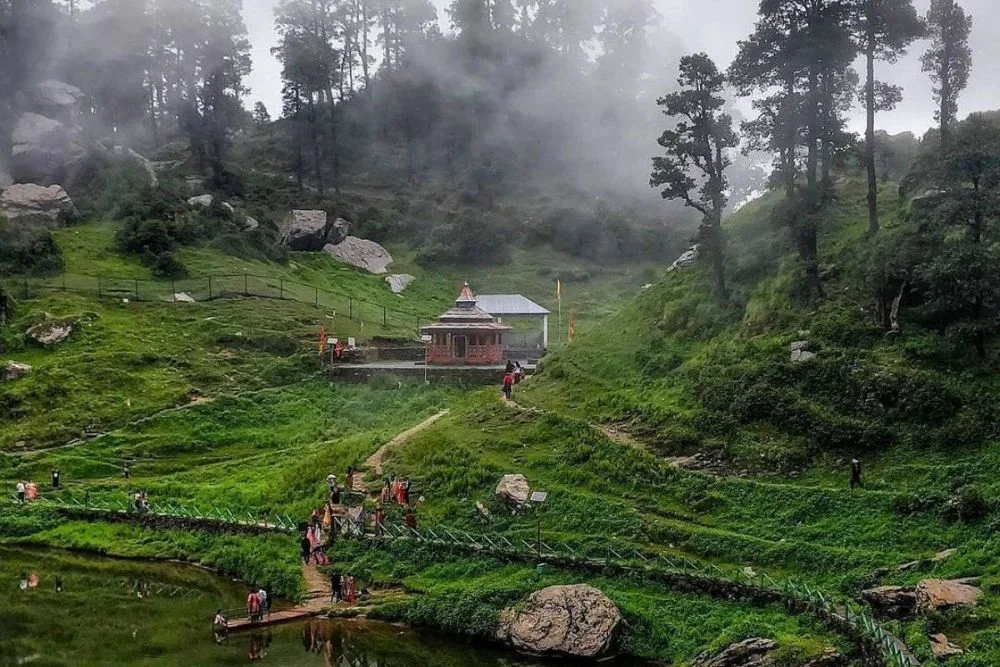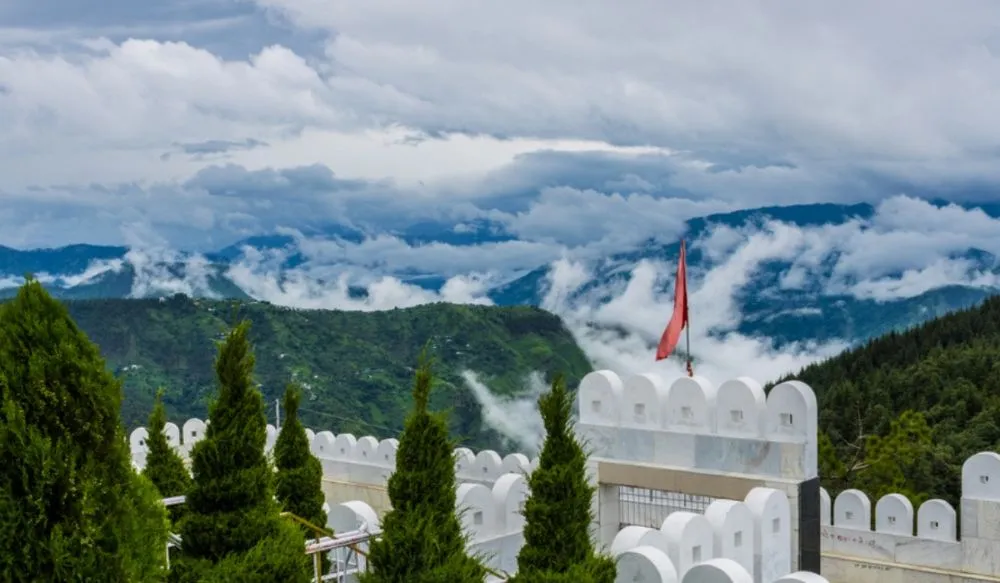Himachal Pradesh in Monsoon: Beauty, Challenges & Travel Tips
The monsoon season in Himachal Pradesh makes everything look absolutely beautiful. The hills turn bright green, waterfalls flow loudly, and sometimes the clouds come too close to the roads. Some people don’t like to travel during the rains as it can cause landslides, but for others, it’s the best time to see the peaceful, natural side of the place. The air is fresh, there are fewer visitors, and it’s a quiet time to enjoy nature. In this blog, you will learn about the best places to visit, travel tips, what the weather will be like and how to stay safe while travelling to Himachal during the rains.
Here you can also check Best time to visit Himachal Pradesh
Pros and Cons of Visiting Himachal Pradesh in Monsoon
Pros:
1. Lush Green Landscapes – The mountains come alive with greenery, waterfalls, and misty views that feel straight out of a movie.
2. Peaceful Experience – With fewer tourists, you can enjoy the quiet charm of Himachal without the usual crowds.
3. Budget-Friendly Travel – Off-season discounts on hotels and travel make it easier on your pocket.
4. Perfect Weather for Slow Travel – Cool breeze, light rain, and cosy vibes make you slow down and truly enjoy the moment.
Cons:
1. Landslides & Road Closures – Sudden weather changes can affect road conditions, especially in hilly or remote areas.
2. Limited Adventure Activities – Treks, paragliding, and camping are often restricted or risky due to weather.
3. Unpredictable Weather – Sunshine one minute, heavy rain the next—so it’s hard to plan a strict itinerary.
4. Connectivity Issues – Power cuts, weak network, or internet loss can happen in remote villages during heavy rain.
Weather Conditions of Himachal Pradesh in Monsoon
Himachal Pradesh receives a lot of rain during the monsoon season from July to early September. The rain can be moderate or heavy. Temperatures usually range between 15°C and 25°C, but depending on how high you are in the mountains, it can be cool or hot. Places like Kangra, Mandi and Bilaspur receive more rain, while higher-up places like Spiti and Lahaul receive less rain but are often cloudy. It often rains a lot during this time, there can be fog in the morning, and cold mountain winds blow. The land looks very green and beautiful, but sometimes landslides occur, and the roads can be slippery and dangerous. It is a good idea to check the weather and road conditions before you travel, as the weather can change quickly in the mountains.
How to Reach Himachal During Monsoon
1. By Air
Flights are available to Shimla, Dharamshala (Gaggal Airport), and Kullu (Bhuntar Airport). But delays or cancellations are possible in the monsoon due to weather, so keep buffer time.
2. By Train
You can take a train up to Kalka (for Shimla), or Pathankot (for Dharamshala or Chamba). From there, taxis or buses are available. Kalka to Shimla also has a famous toy train.
3. By Road
Buses, cabs, or personal cars are common ways to reach Himachal. Use main highways like the Chandigarh–Shimla or Delhi–Manali routes, as they are better maintained. Avoid travelling at night or during heavy rain.
5 best places to visit in Himachal Pradesh during the monsoon
1. Dharamshala & McLeod Ganj

When it rains a lot, Dharamsala becomes a beautiful, green place covered in mist. The rain makes the pine trees look fresh and the hills are covered in clouds. There are quiet Tibetan monasteries where monks live. Just above Dharamsala is McLeod Ganj, a small town with cozy cafes, a temple of the Dalai Lama, and beautiful views of the high mountains called the Dhauladhar range. A light rain makes everything magical. This is a great place for those who want to relax, enjoy a hot drink, and have a peaceful, slow-paced trip.
2. Manali

Manali becomes extra romantic in the monsoon. The Beas River flows stronger, the forests look greener, and waterfalls are at their full charm. Though some outdoor activities like paragliding may be limited, it’s a great time for peaceful walks, enjoying mountain cafés, and experiencing Himachal’s raw natural beauty. Old Manali is especially cosy during the rains. Just avoid remote treks, and stick to central areas for safety.
3. Tirthan Valley

Tirthan Valley is a beautiful place that seems like a hidden secret in the rainy season. It is situated in the Kullu area and maintains a calm and tidy atmosphere with fewer visitors. The green fields, cosy homestays by the river, and dense forests appear breathtaking after the rain. Visitors can partake in trout fishing, leisurely walks in nature, and experience the warm hospitality of the locals. Although the roads may be narrow, the untouched allure of the valley makes it a worthwhile destination.
4. Palampur

Famous for its tea gardens and mountain views, Palampur becomes incredibly beautiful when it rains. The monsoon makes the entire town fresh and green, with clouds floating low over the Dhauladhar ranges. It’s not as crowded as other hill stations, which makes it a perfect spot for travellers who enjoy peace, nature, and photography. Don’t miss the local cafés, tea garden tours, and the nearby Andretta village.
5. Chail

Chail is a small, quiet place near Shimla that becomes very special during the rainy season. It is filled with tall pine trees and has beautiful, misty valleys. Chail is a great place for couples, solo travellers or families who want to enjoy a peaceful vacation without too many tourists during the rainy season. You can see the famous Chail Palace and even visit the world’s highest cricket ground, which makes your trip even more interesting.
What to Pack for a Monsoon Trip to Himachal?
1. Waterproof Jacket or Raincoat – Essential for sudden showers and staying dry.
2. Good Quality Umbrella – Compact and wind-resistant.
3. Waterproof Shoes or Trekking Boots – To walk comfortably on wet or muddy paths.
4. Quick-Dry Clothes – Lightweight and fast-drying materials are better than cotton.
5. Extra Socks & Innerwear – Rain can make clothes damp, so carry extras.
6. Plastic Bags/Dry Bags – For keeping electronics, documents, and clothes safe from moisture.
7. Basic Medicines – For cold, fever, allergies, and motion sickness.
8. Power Bank & Torch – Useful during power cuts or if stuck during travel.
9. Snacks & Water Bottle – In case of delays due to landslides or traffic jams.
10. ID Proof & Emergency Contacts – Always carry a physical copy.
Travel Tips for Visiting Himachal Pradesh in Monsoon
1. Start Early in the Day – Mountain travel is safer during daylight, and you’ll avoid evening fog or rain-related delays.
2. Stay Updated on Local News – Follow local weather or traffic updates through Himachal Police Twitter handles or regional news apps.
3. Choose Reliable Accommodation – Book hotels or homestays that are well-rated for monsoon stays (look for backup power and good drainage).
4. Avoid Unplanned Detours – Stick to known routes and avoid trying offbeat shortcuts during rains—they can be risky or blocked.
5. Keep Cash Handy – ATMs and digital payments may not always work in remote or rain-affected areas.
6. Talk to Locals Before Heading Out – Locals often know which roads are safe or where minor landslides have occurred recently.
Conclusion
Travelling to Himachal Pradesh during the rainy season can be a wonderful experience. The hills are green, the atmosphere is calm, and the sound of rain adds to the natural beauty. Although there are some challenges like landslides and unpredictable weather, with careful planning, it can be a memorable trip. If you enjoy taking your time, admiring beautiful scenery, and avoiding crowds, the monsoon season could be a great time to visit Himachal in its most natural state. Be prepared, stay updated on the weather, and let the rain lead you on a journey through the misty mountains of Himachal Pradesh.
Here you can also check out the Best Hill stations to visit in India
FAQs about Himachal Pradesh in Monsoon
1. Can I travel solo to Himachal during monsoon?
Yes, you can travel solo, but it’s best to stick to popular towns with good connectivity like Manali, Dharamshala, or Shimla. Always inform someone about your travel plans and avoid remote trekking routes.
2. Are buses and public transport reliable during the monsoon in Himachal?
Most state-run buses (like HRTC) operate regularly on main routes. However, delays or route changes can happen due to landslides or heavy rain, especially in hilly or interior regions.
3. Is Spiti Valley safe to visit in the monsoon?
Spiti receives less rainfall than other parts of Himachal, but the roads to reach there (especially via Kinnaur) are highly prone to landslides during monsoon. It’s better to visit Spiti post-monsoon for safer travel.
4. What are the best monsoon-friendly activities in Himachal?
Enjoying scenic drives, visiting monasteries, trying Himachali food, relaxing in cafés with a mountain view, and photography are great monsoon activities. Stick to light walks and avoid high-altitude treks.
5. Are hotel and homestay prices lower during the monsoon season?
Yes, monsoon is considered off-season in many parts of Himachal, so you’ll often find discounted rates on hotels, homestays, and even travel packages. It’s a great time for budget travellers to explore premium stays at lower prices.
6. Can I enjoy snowfall anywhere in Himachal during the monsoon?
No, snowfall does not occur during the monsoon season. Monsoon brings rain, not snow. For snowfall, you’ll need to visit in winter (typically between December and February), especially in places like Manali, Kufri, or Spiti.
